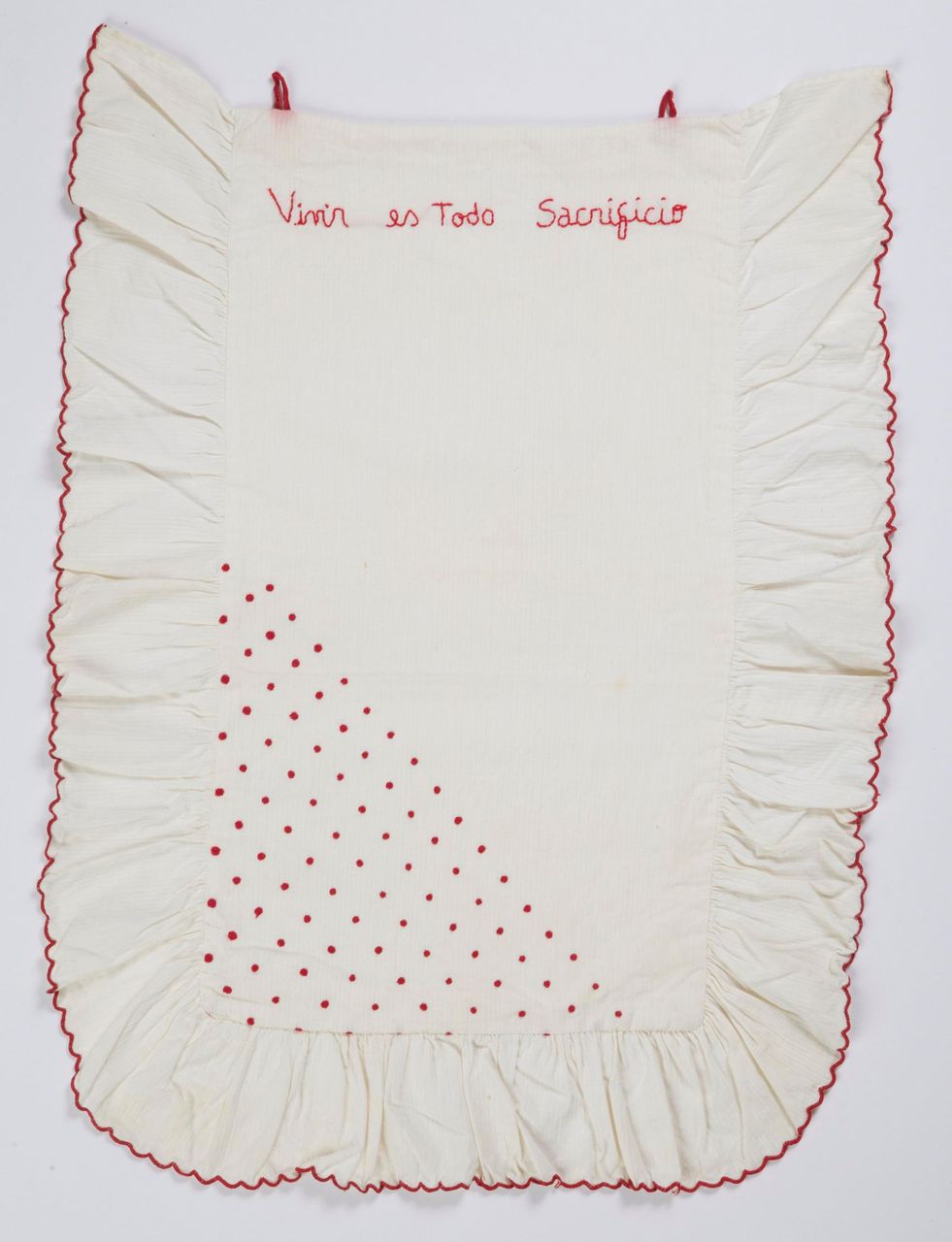-:-- / -:--
-:--
Feliciano Centurión, 1962-1996
Vivir es Todo Sacrificio, 1996
Embroidery with inclusion on blanket
55.0 x 43.0 cm (21.7 x 16.9 in)
Gallery: Cecilia Brunson Projects
more
This work by Feliciano Centurión, made in the final year of his life, confronts the viewer with the stark contrast of its formal appearance and the solemnity of the embroidered caption. As a child, Centurión was surrounded by craft production and embroidery, however he was taught that sewing was for women and not men. Having left Paraguay and moved to Buenos Aires, he made a conscious to decision to engage in conventionally feminine craft practices in his art. References to sacrifice also recur in his work and connect to themes of canonisation and the suffering male body within religious tradition. The purest Christian concept of sacrifice entails suffering for the purpose of forgiveness of sins; for Centurión, the (direct or indirect) cause of his death was, in the eyes of the Church, a sin. Therefore, the association with sacrifice in his work is sinister, it is uncomfortable to conceive of his death as an absolution of sins because this necessitates the (harmful and incorrect) belief that HIV/AIDS is transmitted through acts of perceived sexual immorality.
... read more
This work by Feliciano Centurión, made in the final year of his life, confronts the viewer with the stark contrast of its formal appearance and the solemnity of the embroidered caption. As a child, Centurión was surrounded by craft production and embroidery, however he was taught that sewing was for women and not men. Having left Paraguay and moved to Buenos Aires, he made a conscious to decision to engage in conventionally feminine craft practices in his art. References to sacrifice also recur in his work and connect to themes of canonisation and the suffering male body within religious tradition. The purest Christian concept of sacrifice entails suffering for the purpose of forgiveness of sins; for Centurión, the (direct or indirect) cause of his death was, in the eyes of the Church, a sin. Therefore, the association with sacrifice in his work is sinister, it is uncomfortable to conceive of his death as an absolution of sins because this necessitates the (harmful and incorrect) belief that HIV/AIDS is transmitted through acts of perceived sexual immorality.
... read more










